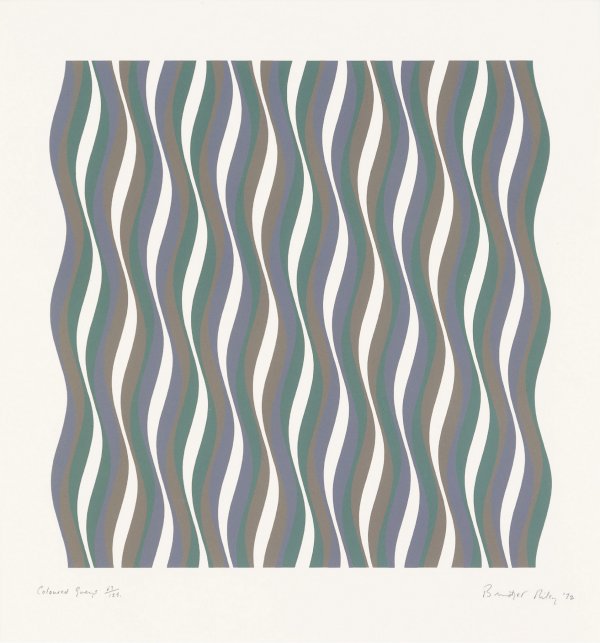Bridget Riley: Behind The Illusions
Bridget Riley was born in Norwood, London in 1931. Her father was a printer by trade and owned his own business. Her mother is the daughter of an English inventor who worked for Thomas Edison.
Riley studied art at Goldsmiths College (1949–52) and later at the Royal College of Art (1952–55).
Riley joined the J. Walter Thompson advertising agency, as an illustrator, where she worked part-time until 1962.
Between 1958 and 1959, Riley’s work at the advertising agency showed her adoption of a style of painting based on the pointillist technique having been influenced by a number of sources particularly the French Post-Impressionist artist Georges Seurat. Her early work was figurative and semi-impressionist.

Around 1960, Riley began to develop her signature Op Art style consisting of black and white geometric patterns that explore the dynamism of sight, and produce a disorienting effect on the eye as they created movement and colour.
Bridget Riley was the “It” girl of the 1960s. Despite some of the criticism of her work featured in the exhibition The Responsive Eye at the Museum of Modern Art in New York, Riley held another wildly popular exhibition that same year, in the US, at the Richard Feigen Gallery in New York. The show, an exhibition of 16 paintings, was a sell-out success, selling out before it even officially opened.

Copied freely by graphic designers and fashion magazines, Riley was upset by the commercialisation of Op Art. Her art was repeated and widely reproduced by ready-to-wear manufacturers, her paintings commodified before she could protest. Riley is noted as saying that her “heart sank” as she drove from the airport down Madison Avenue, seeing shops littered with dresses based on her paintings.
In the US there was no copyright to protect the work of artists. It was not until 1967 that a US copyright legislation was passed following an independent initiative by New York artists.
From 1961 to 1964, Riley worked with the contrast of black and white, occasionally introducing tonal scales of grey. Riley began investigating colour in 1967, the year in which she produced her first stripe painting.
In 1965, Riley’s exhibition The Responsive Eye was shown at the Museum of Modern Art in New York, which drew worldwide attention to not only her work but the Op Art movement.
In 1966 Keith Moon, the drummer from the The Who, was photographed wearing a T-shirt adorned with Riley’s painting Blaze (1964), a swirling vortex of black and white geometric lines.

Since 1961 Riley’s paintings have been executed by assistants. Riley meticulously plans her composition’s design with preparatory drawings and collage techniques; her assistants paint the final canvases with great precision under her instruction.
Bridget Riley was the first woman to receive the Sikkens Prize, a prestigious Dutch art award that recognises the use of colour. In 1968, though she was reluctant to be known as a female artist but rather as an abstract painter, she was the first woman to win the International Prize for Painting at the Venice Biennale.
Bridget Riley Prints
Browse available Bridget Riley prints from leading galleries and art dealers.
